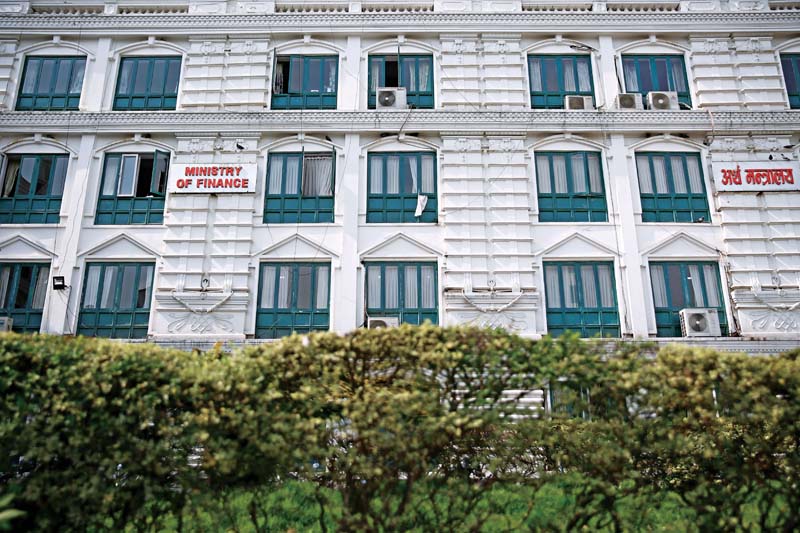Government mulling over contributory pension scheme
Kathmandu, August 14
The government is preparing to introduce an act to enforce the contributory pension scheme as the government’s expenses in distributing pensions and gratuities have been increasing at an alarming rate over the years.
The Ministry of Finance (MoF) has framed the draft bill of contributory pension scheme and is preparing to forward it to the Cabinet for approval, according to Shanta Raj Subedi, finance secretary. “Once the bill is endorsed from the Cabinet, we will register it at the Parliament for the parliamentary proceedings.”
Contributory pension scheme will be applicable for civil servants, including security personnels, teachers and other government officials.
The government’s liability in pension has skyrocketed by 400 per cent in the last 10 years from Rs 12 billion in fiscal 2007-08 to Rs 45 billion in fiscal 2017-18, according to MoF. The government’s liability in last fiscal 2016-17 stood at Rs 35 billion.
Pension liability and increase in other recurrent expenditures directly affect the government’s capacity to spend in development projects, capital formation and employment generation.
“The MoF has shown willingness to expedite the process to bring the law, and the draft is all set to be submitted to the Cabinet for endorsement,” said Kewal Prasad Bhandari, chief of the Budget Division, under MoF. “However, the liability of the government will rise further if the parliamentary process lengthens.”
Currently, the government has been providing pension to the civil servants based on the formula of total years in the government service multiplied by salary scale during the time of retirement and the total amount divided by 50.
However, once the proposed bill is endorsed from the Parliament and becomes the law, the civil servants, Nepal Police, Nepal Army, teachers and other government staffers would have to put aside 10 per cent of their monthly salary for their pension. The government would also contribute a certain amount to create the fund.
The draft bill that MoF has framed has envisioned a separate institution to manage the fund. It will be a financial institution similar to the Employees Provident Fund. This institution will have the authority to make investments to expand the size of the fund. The pension fund would be able to invest in government securities, fixed deposits of banks and financial institutions, profit-making productive sectors by itself and in consortium as well.
The draft bill has proposed the financial comptroller general to chair the financial institution, that is, the pension fund. The actuaries appointed by the fund will fix the pension amount for the retired government employees or gratuities for those want to leave their jobs, according to Bhandari.
Draft highlights
- Pension for government employees for life after he or she has served in the government office for 20 years.
- If the pensioner expires within seven years since receiving pension, the spouse will get full pension for seven years and half the amount for next five years.
- If the pensioner expires and the spouse remarries, the child of the deceased government employee will get pension until he or she reaches 21 years of age.
- If the deceased had more than one child, the pension amount would be equally distributed among them.
- If an employee wants to leave the service, he or she will get the lump-sum payment calculating the actual amount contributed by him or her plus interest of that amount and profit (from the fund).
- However, if the staff is removed from the post, he or she will get only the amount contributed to the fund during the service period plus the interest amount.






